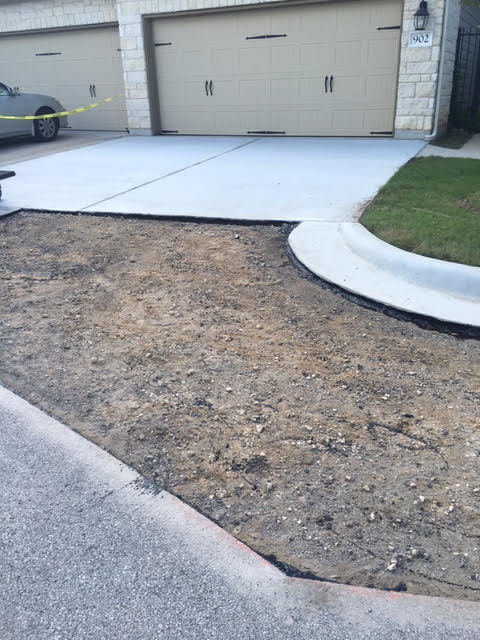

Experienced professionals can place concrete during most months in Austin and Central Texas, but it takes training and practice to ensure success when the weather is too hot or too cold. Most experts agree that the ideal conditions for placing concrete include air temperatures between 50 degrees and 90 degrees Fahrenheit, but a great deal of concrete is placed when temperatures are outside of the ideal range. However, there must be no precipitation expected for at least 24 hours and no overnight freezes predicted for at least 48 hours. Concrete contractors must also consider the humidity level and wind speeds when determining whether conditions are suitable for pouring concrete.
Poring Concrete – Hot & Cold Weather – Why It Matters
Most of the issues encountered when placing concrete in hot or cold weather involve the manner in which concrete cures. Many people do not realize that concrete does not actually dry from evaporation the way that most liquids do. Instead, concrete cures through a chemical reaction between the water in the mix, the cement and other additives. The curing process may continue for years, but most concrete is sufficiently set within a few days. For the first few days, it is essential that the concrete cure at roughly the same rate throughout the mix.
Placing Concrete in Hot Weather
When the air temperature exceeds 90 degrees Fahrenheit, the water in the top layer of concrete may be lost to evaporation. This allows the top layer to cure faster than the lower layers. The problem is that concrete will shrink when it dries. As a result, the top layer shrinks, but the rest of the concrete is stationary. Cracks will form, and the pavement may not be as strong or impermeable as it should be. Low humidity levels and strong winds can increase the difficulties involved with placing concrete in hot weather. Fortunately, experienced contractors know how to overcome these difficulties by managing the ingredients, taking steps to keep the slab moist or applying chemicals to prevent the rapid evaporation of water in the mix.
Placing Concrete in Cold Weather
Most contractors avoid placing concrete if the ground is frozen or when overnight lows will drop below freezing. Concrete needs time to set before exposure to freezing temperatures. The problem is that when the water in the mix freezes, it expands, and this expansion will crack the concrete. Professionals may use a concrete blanket, additives in the mix or a heated shelter to help ensure that the concrete does not freeze or to accelerate the rate at which the concrete sets.
Other Methods for Ensuring Success
Depending on the weather conditions and the nature of the project, there are several possible steps that contractors can take to ensure the success of a concrete project performed in hot or cold weather. For example, in extremely hot weather, the concrete slab may be submerged in water and/or wrapped in plastic. In cold weather, it may be possible to use steam to heat the concrete while it is setting.
If you are planning a concrete project, contact the professionals at Alpha Paving Industries. We offer a full range of concrete-related services, including concrete parking lots, sidewalks, ramps and curbing. We also offer a complete range of asphalt-related services, including asphalt paving and overlays, sealcoating, parking lot striping, road construction, asphalt repair and milling. We routinely provide our services to apartment complexes, municipalities, shopping centers, office parks, hotels, educational facilities, hospitals, restaurants, airports, retailers and subdivisions. We are known for our exceptional workmanship and reasonable rates. If you have more questions about Poring Concrete – Hot & Cold Weather or would like a free quote, submit the online form or call (512) 677-9001.

